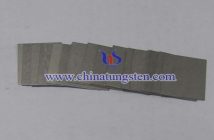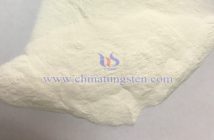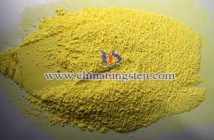The key preparation processes of barium tungsten electrode include porous tungsten matrix, barium impregnation reduction, etc. The following is its main process flow:
I. Preparation of Porous Tungsten Matrix
1. Raw material selection: high-purity tungsten powder (more than 99.95%), the particle size is usually 1-5 μm.
2. Molding and pre-sintering:
Molding or cold isostatic pressing, pressure 100-300 MPa, to form a porous green body.
Pre-sintering (800-1200℃) in hydrogen or vacuum environment, initially remove impurities and enhance the strength of the green body, and control the porosity at 20-40%.

II. Barium Salt Impregnation
1. Preparation of impregnation solution:
Barium nitrate (Ba(NO?)?) or barium carbonate (BaCO?) is dissolved in deionized water or ethanol, the concentration is 10-30 wt%.
Add a small amount of dispersant (such as polyvinyl pyrrolidone, PVP) to improve the permeability of the solution.
2. Impregnation process:
Vacuum impregnation: Place the porous tungsten substrate in a vacuum environment and evacuate the air, then immerse it in a barium salt solution, and use capillary action to fully fill the pores with the solution.
Cyclic impregnation: Repeat the impregnation-drying steps (2-3 times) to ensure that the barium salt is evenly distributed.
III. High-Temperature Decomposition and Reduction
1. Decomposition stage:
Heat to 400-600℃ in air or inert atmosphere to decompose barium nitrate into barium oxide: 2Ba(NO?)? → 2BaO + 4NO?↑ + O?↑
If barium carbonate is used, it needs to be decomposed into BaO and CO? at a higher temperature (>1000℃).
2. Hydrogen reduction:
Heat to 1200-1600℃ in a hydrogen atmosphere, keep warm for 1-3 hours, and reduce BaO to metallic barium: BaO + H? → Ba + H?O↑
Barium is deposited in the pores of tungsten in the form of nanoparticles to form active electron emission centers.

IV. Post-Treatment and Performance Optimization
Surface densification: Through hot pressing or hot isostatic pressing (HIP) treatment, the surface pores are closed to reduce barium volatilization.
Surface coating: Ir, Re or rare earth oxide (such as Y?O?) film is plated to improve the ability to resist ion sputtering.
Electron emission activation: High temperature annealing (>1800℃) in vacuum or hydrogen promotes the migration of barium to the surface and reduces the work function.
V. Key Process Points
1. Pore structure control:
The pores of the porous tungsten matrix need to be connected and evenly distributed, with a pore size range of 0.1-5 μm to ensure full penetration of barium salts.
Excessive porosity will lead to insufficient mechanical strength, while too low porosity will limit the barium loading.
2. Barium volatilization inhibition:
Rapid heating (>10℃/min) and short-term insulation at low temperature are used in the reduction stage to reduce barium loss.
Add barium aluminate (BaAl?O?) or magnesium aluminum spinel (MgAl?O?) as a stable carrier of barium.
3. Material compatibility:
Avoid the use of impurities that react with barium (such as oxygen and sulfur), and strictly control the purity of hydrogen (dew point <-40℃). 4. Performance characterization: Electron emission performance: Test the work function (usually as low as 1.5-2.0 eV) and emission current density (>10 A/cm2).
Life evaluation: Test the consumption rate of barium under simulated working conditions (such as vacuum, high temperature, electron bombardment).



